Hoot Owl Hoot
Ages: 4 and up
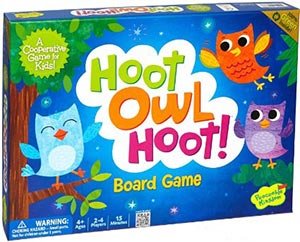
It turns out that not every game has to result in winners and losers. In Hoot Owl Hoot kids work together to figure out how to get the owl back to its nest before the sun rises. Each player gets three cards and moves an owl token toward its nest based on the color on the card. If the player draws a sun card, the sun moves one step closer to sunrise. The goal is to get all of the owls (as many as six) back to the nest before the sun token hits full sunrise, so sometimes planning is involved — like deciding which owl will get closest to the nest with a particular card. Aside from building self-esteem and cooperative skills. Hoot Owl Hoot introduces kids to the idea of strategy, problem solving, and turn taking. No reading required, so even the youngest family members can join in.
Bottom line: A simple, fun game that uses team play to bring out the best in everyone.
Count Your Chickens
Ages: 3 and up

Count Your Chickens, another cooperative-play game from the folks who make Hoot Owl Hoot, uses a spinner to move chickens to the coop. The goal is to get 40 chickens in the coop before the game is over. Of course, there are obstacles along the way, this time in the form of wily foxes that steal chickens from the coop. If you don’t get all 40 chickens in the coop, just try again! Another bonus is that games from Peaceable Kingdom are environmentally conscious and use minimal packaging and paper (the instructions are printed on the box, for instance).
Bottom line: A cooperative game that’s simple to learn, but with enough interest to keep kids coming back.
Spot It
Ages: 6 and up
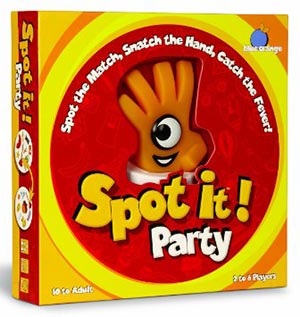
Spot It puts a unique twist on matching games. Each of the 55 round cards has a symbol on it that matches exactly one symbol on every other card. The object is to be the first one to find the most matches from the cards you are dealt. Matching pictures on cards — how hard can that be? Harder than you think (sometimes the size of the symbols change), and it’s all a matter of speed. You can play with up to eight people, and since there’s no reading involved, even kindergartners can get into the action. The game also includes instructions for four additional games. Packaged in a small tin and requiring little space to play, it’s the perfect travel game for the whole family.
Bottom line: This fast-paced game is great to take on the road and will grow with your kids.
5 Second Rule
Ages: 10 and up

Name three people you might find in a hospital. Piece of cake, right? Well, try to do it in five seconds — that’s the premise of 5 Second Rule. If you can do it, you win a point. If you only manage to blurt out “doctor” and “nurse,” the play moves to the next person to try to come up with the three people. But the catch is they can’t use either of the two that the first player said. So the play goes around the room until someone is able to name three people you’d find in a hospital (and by now it’s pretty much a sure thing that everyone in the room will be laughing so hard they won’t be able to speak even if they have the answer). Time is kept by a big yellow timer that makes a great noise as the balls fall.
Bottom line: A face-paced word game that will definitely get the party started.
Dweebies
Ages: 8 and up

Dweebies is a strategic, delightfully designed card game in which each player tries to collect the most cards. Kids will start to learn probability as they try to determine if another player will scoop up a row of cards before they do, based on how many of each card type is included in the deck. Up to six people can play, and in this game, the more the merrier.
Bottom line: Cute cartoon characters and simple rules create a fun and unpredictable game.
Kabaleo
Ages: 8 and up
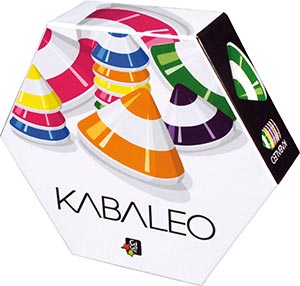
If you love strategy, speed, and game pieces that make a satisfying clacking noise when you play them, check out Kabaleo. This quick, action-packed game requires players to bluff their way to domination by hiding the very identity of their color as they place cones on a board. It takes planning, skill, and just a touch of cunning to plot a path to victory.
Bottom line: Kids will have to put on their best poker face to win this game of strategy.
Word on the Street Junior
Ages: 8 and up
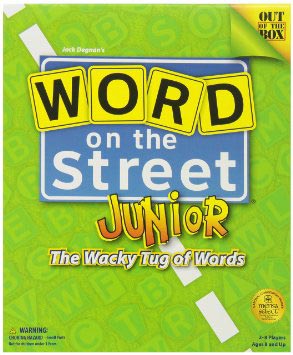
This word game stands apart because you can spell any word you want (you’re not limited by any particular group of letters), as long as it fits within the category on the card you pick. So if the category is “Something that runs,” players could say cheetah, dishwasher, or athlete (you have 30 seconds to come up with a word). The goal of the game is to be the first to get eight letter tiles on your side of the road (a letter moves toward you each time you use it).
At its most simple level, Word on the Street Junior helps kids practice spelling and categorization, but it also requires strategic planning in picking the right word for the right situation. When played in teams, the game has additional benefits. It teaches collaboration since each team must decide on its word before the time runs out. It’s also inclusive since even the kids who aren’t ace spellers can participate.
Bottom line: Great game for kids with a mix of skills and strengths to play together.
Cubulus
Ages: 8 and up
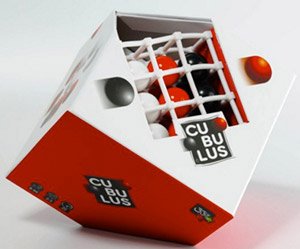
Part croquet (ok, that’s a stretch, but you do push your opponents ball out of your way), part 3-D tic-tac-toe, Cubulus is a multisensory experience that can be played with two or three players. Each player gets nine balls of a particular color, and the goal is to form a square with four of your balls on one side of the satisfyingly squishy cube. But you have to pay attention, because when you push your ball into the cube, you may be pushing your opponent’s ball into a winning square. This game is a great work out for spatial processing and critical thinking. It’s also fun and deceptively challenging.
Bottom line: Smart strategy game that is almost as fun to hold as it is to play.
Pathwords
Ages: 12 and up
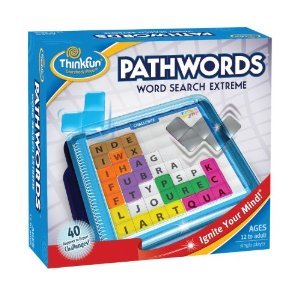
A combination of a word search and puzzle game, Pathwords gets increasingly challenging as you move along. The goal? To fit the colored pieces over the words in each puzzle so that all of the letters are covered. Sound easy? Not so fast — sometimes the words are backwards, which can be tricky: “equip” didn’t look like a word when spelled “piuqe.” This is a single-player game and it can be quite addictive. Of course kids who want to play together can swap games or help each other out with each puzzle. There are a total of 40 games, from beginner to expert.
Bottom line: An addictive word game that also requires visual spatial skills.





